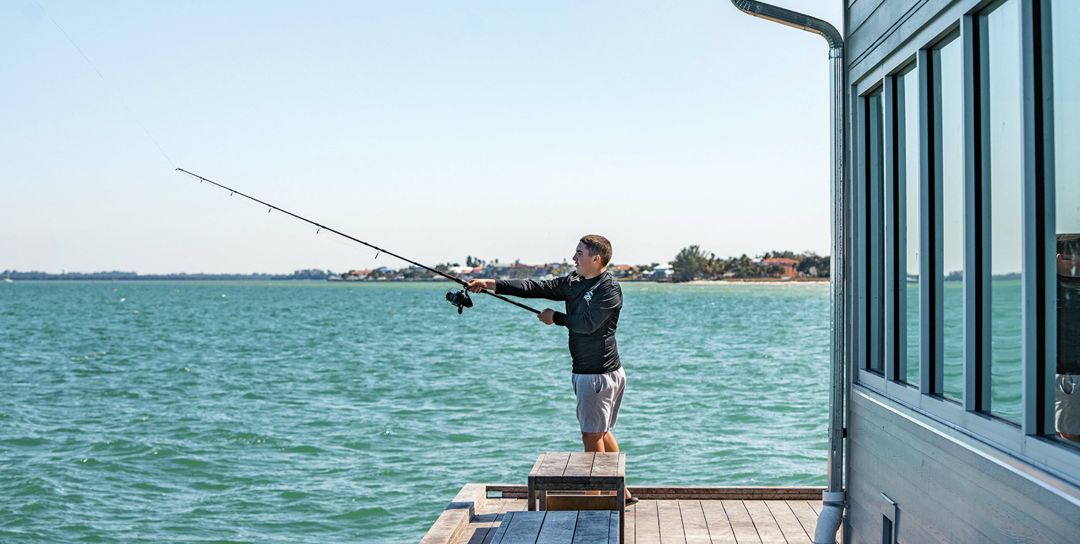What to Know About Fishing Regulations

Image: Everett Dennison
Whether you’re a Florida resident or are just visiting, you will need a fishing license if you want to toss out a line. It’s easy. Go online to gooutdoorsflorida.com or visit your local license agent or tax collector’s office. The part that’s complicated, however, is knowing what kind of license you’d like, based on the timeframe and what you want to fish for, and whether you will need a permit for certain kinds of fish.
Residents can hold a saltwater onshore or offshore license for one year ($17) or five years ($79). Non-residents can obtain an annual ($47), three-day ($17) or seven-day ($30) license. If you only want to fish from the shoreline, you can get a license at no cost. A combination salt and freshwater license will cost you about $32 per year.
If you want to hire a charter boat captain for the day, you do not need a fishing license as long as the captain and vessel have a valid license.
“Permits are needed in order to catch specific kinds of fish,” says Sarasota Bay Estuary Program director of planning Darcy Young. “You can get permits at gooutdoorsflorida.com or at the tax collector’s office.” Young says that in Sarasota, you need a permit and license in order to catch species like snook, spiny lobster and blue and stone crab. Permits cost anywhere from $5 to $50, depending on the species.
To find the size regulations, daily catch limits and catch and release dates for each species, download the Fish Rules app.
How to Protect Marine Life
Learn to safely tackle and release fish. “Use the proper weight class of tackle, land your catch as quickly as you can, immediately release back into water and use barb-less and circle hooks to prevent injury to the fish,” says Young.
Don’t leave behind any gear. Discarded fishing line traps birds. Don’t leave line in the mangroves.
Learn how to safely unhook a bird if caught. “You can actually unhook the bird, like a pelican, instead of just cutting the line,” says Young.
Observe slow speed zones, don’t feed animals and don’t throw fish bones to the pelicans (no matter how much they beg for them).
Preserve seagrass. “Avoid leaving the channel when boating, where seagrass tends to grow,” says Young. “Tilt your engine up in shallow water so that your propeller doesn’t leave scarring in the seagrass. Turn the motor off and use a paddle or pole to push yourself back in the right direction if you get stuck.”
Wear polarized sunglasses. This way you can see the seagrass, manatees and dolphins below.
Program wildlife rescue hotlines in your phone. If you notice an injured animal, call hotlines like Save Our Seabirds, (941) 388-3010, or Mote’s stranded animal hotline, (888) 345-2335.



